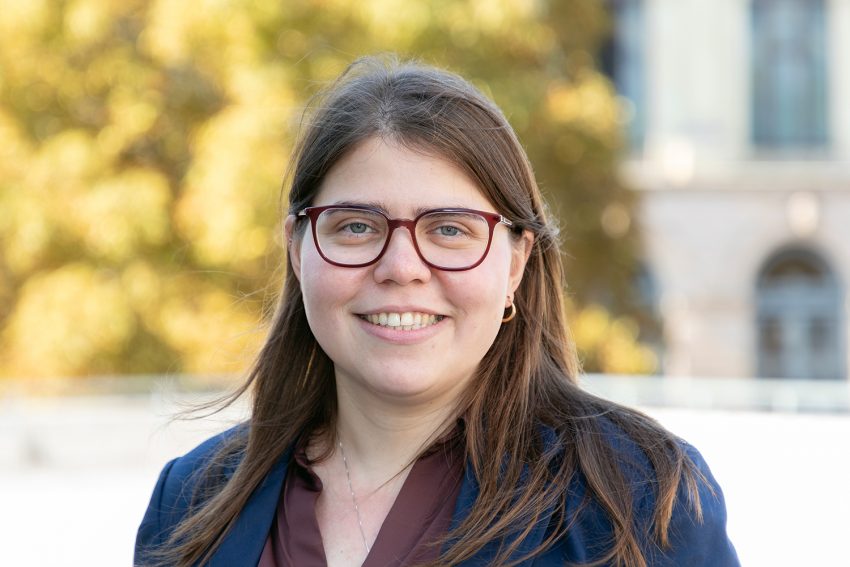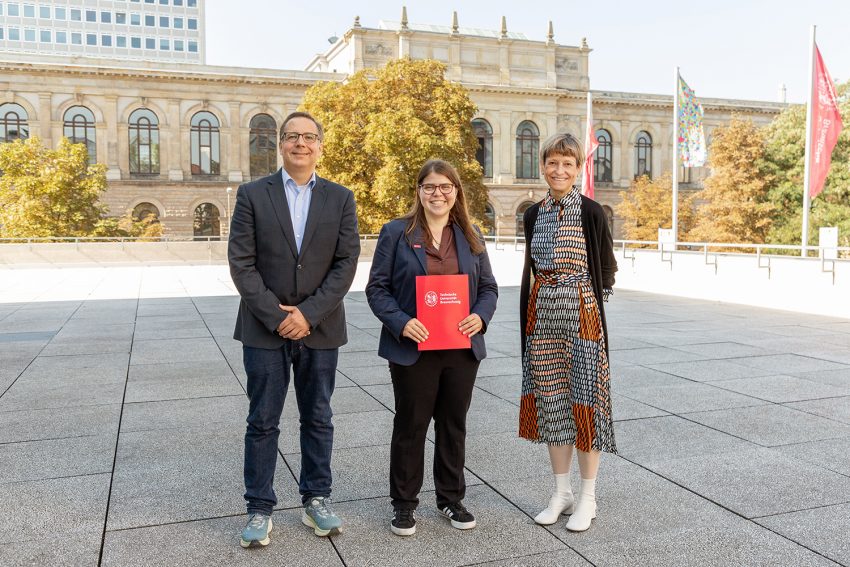“Everything the heart of a solid-state physicist desires” Farsane Tabataba-Vakili is the new assistant professor for experimental physics, quantum matter
Farsane Tabataba-Vakili has been teaching and researching at the Institute for Condensed Matter Physics at TU Braunschweig since September. Previously, she was a postdoctoral fellow at LMU Munichand received her PhD from Université Paris-Saclay. In her research, the physicist focuses on two-dimensional quantum materials. One of the most prominent representatives is graphene, which became known as the “thinnest material in the world” after its discovery in 2004. Many new materials with extraordinayproperties can now be produced. “We do fundamentalresearch with possible applications in sensor technology and metrology, in spintronics and (quantum) optoelectronics” says Professor Tabataba-Vakili, who answered a questionnaire for us.

Farsane Tabataba-Vakili, Junior Professor of Experimental Physics, Quantum Matter.
Photo credits: Kristina Rottig/TU Braunschweig
Why did you choose TU Braunschweig?
TU Braunschweig’s Faculty 5 has a very strong solid-state physics programme with a focus on topics such as quantum physics, quantum technologies and nanometrology, as well as the Cluster of Excellence “QuantumFrontiers”. This includes several institutes in the fields of physics and electrical engineering. With many opportunities to collaborate with colleagues, this is an excellent environment for my research. My research also fits well within the TU’s research focus on metrology. Coming from Berlin originally, being near home was another great advantage.
What exactly do you focus on in your research?
We deal with novel two-dimensional quantum materials. These are materials in which the individual layers are only weakly bound to together by van der Waals forces, which is why they are also called van der Waals materials. Individual layers of these materials, which are then only a few atoms thick, can be pulled apart with scotch tape because of these weak forces between the layers. In 2010, the Nobel Prize in Physics was awarded to Andre Geim and Konstantin Novoselov for groundbreaking experiments with graphene, the first of these 2D materials. Hundreds of these materials can now be made and thousands are predicted. These materials include metals, insulators, semiconductors, magnets, topological insulators, superconductors – everything the heart of a solid-state physicist desires.
Once individual layers of these 2D quantum materials have been exfoliated, they can be stacked arbitrarily to create materials with completely new physical properties or increased sensitivity. Suddenly, it no longer matters whether the lattice constants match, as is the case with “normal” semiconductors such as gallium arsenide or gallium nitride that are grown epitaxially. For example, the properties of such a 2D heterostructure change in an intriguing way when the angle between two adjacent layers is changed. This gives rise to so-called moiré effects, which create potential landscapes.
We are interested in the coupled optical, electronic and magnetic properties of 2D semiconductors and their heterostructures at low temperatures near absolute zero (about -270 °C). We study these properties by shining laser light on the samples and observing the response of the material. In addition, we have several control parameters in the experiment, such as the magnetic field or temperature and can study these properties as a function of the control parameters.
What research topics and projects will you be working on at TU Braunschweig?
My research group will mainly focus on low-temperature magneto-optical spectroscopy of novel 2D quantum materials. We are particularly interested in the excitons in these materials. These are bound electron-hole pairs in the semiconductor that can emit light. We are doing fundamental research to better understand coupled quantum phenomena in heterostructures made of these materials, and we are investigating completely new 2D quantum materials for future applications in quantum metrology and quantum sensing.

President Angela Ittel (r.) with Junior Professor Farsane Tabataba-Vakili and Prof. Patrik Recher, Dean of the Faculty of Electrical Engineering, Information Technology and Physics.
Photo credits: Kristina Rottig/TU Braunschweig
What was your motivation to do research in this area?
I think, as with many things in life, there was a lot of chance involved. There are so many very exciting fields of research. I am originally from Berlin and studied at TU Berlin, which has a strong solid physics department as well. Therefore, I ended up in this field of physics through the experiments I did during my practical courses during my bachelor’s degree. After completing my PhD in Paris, I changed my research field within experimental solid-state physics because my PhD advisor recommended that I should work on a “hot topic” if I wanted to pursue a career in academia. This hot topic ended uo being 2D quantum materials, which I then worked on for four years during my postdoc in Munich. And obviously my PhD advisor was absolutely correct in his assessment, otherwise I wouldn’t be here today. There are many interesting questions in this field that we try to answer. Often, instead of answers, you find even more interesting questions. Hopefully, these materials can also be used for useful applications in the future. But first, more fundamental research is needed. After all, without today’s fundamental research, there will be no new applications of tomorrow.
How would you describe your working day in three keywords?
I have only been an assistant professor for nearly two months. At the moment, my life consists mainly of proposals, e-mails and phone calls. In the near future, hopefully research, teaching and administrative work.
Thank you very much!
